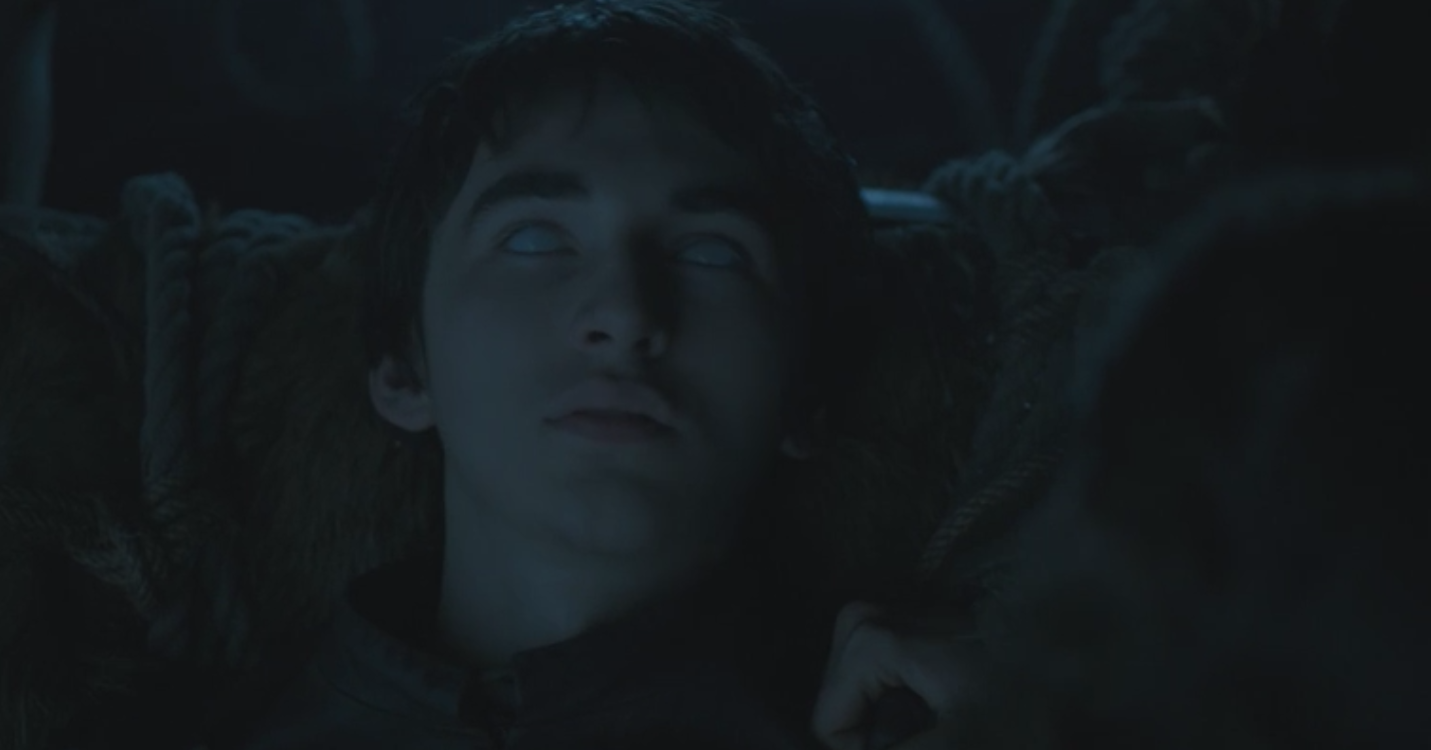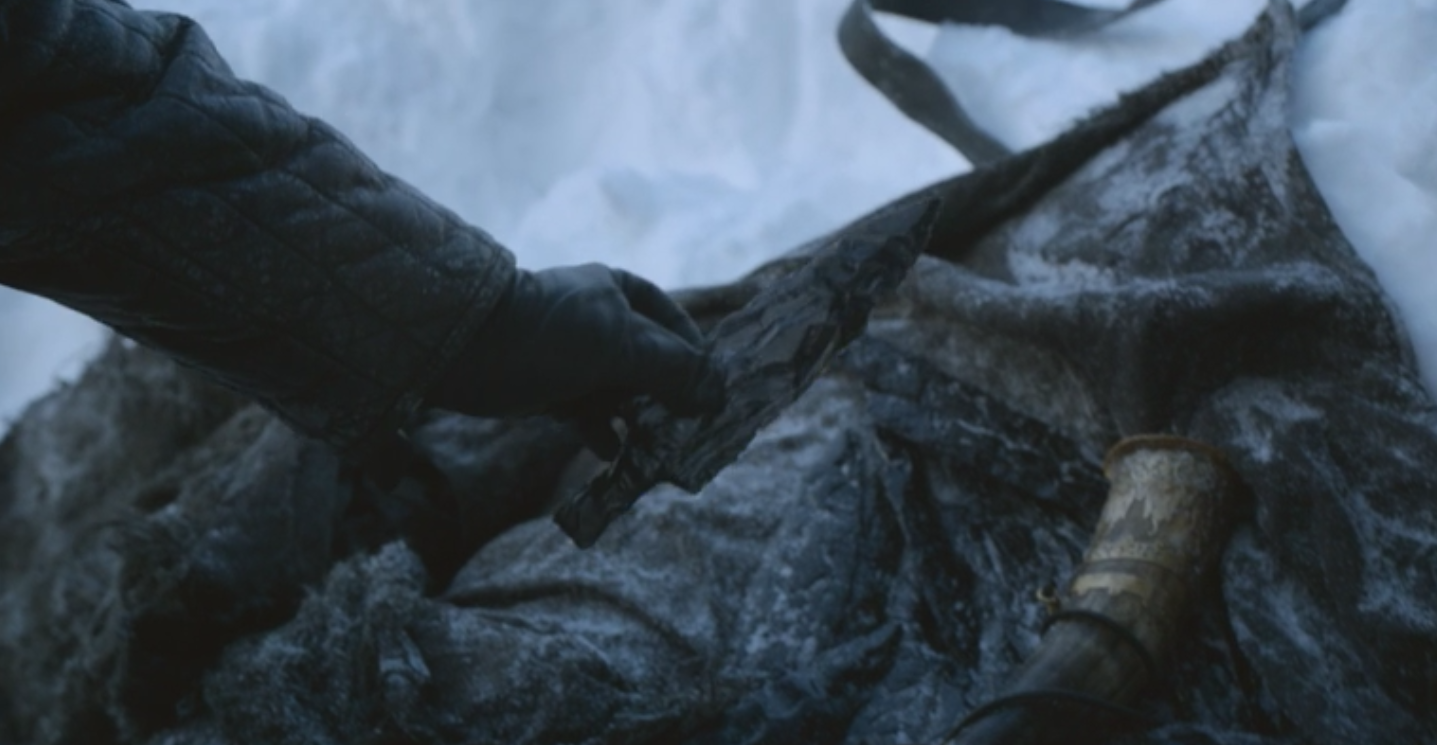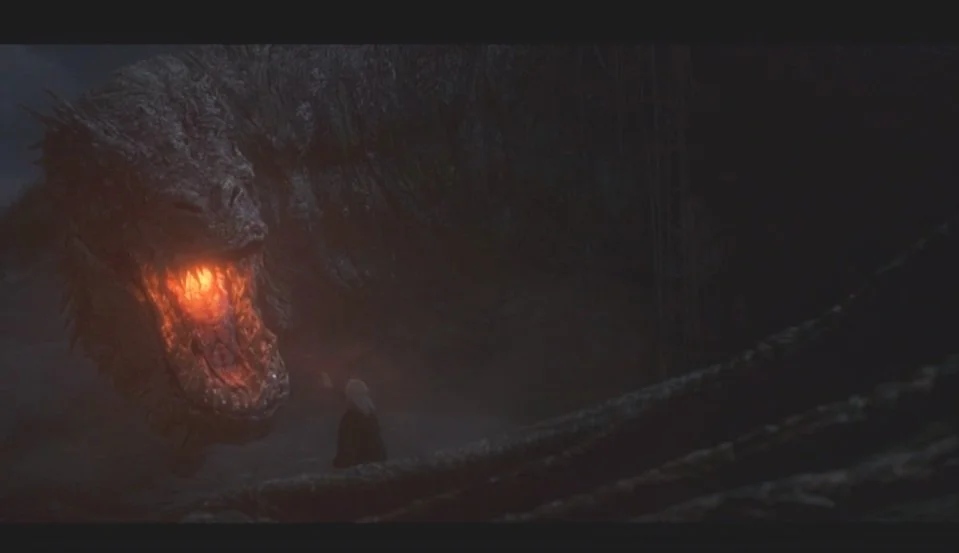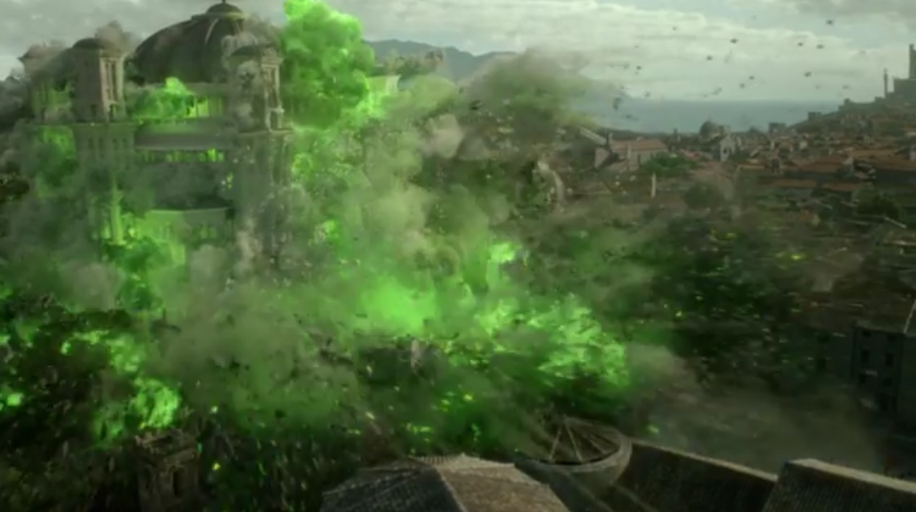Game of Thrones Lore: Early History, from the Dawn Age to the Doom of Valyria
I've mentioned before that despite numerous differences between the novels in A Song of Ice and Fire and HBO's adaptation to Game of Thrones, I'm a huge fan of the show. I think they do a great job supplying some of the extensive detail of the massive fantasy world George R.R. Martin created. They also include references to book material, which is highly satisfying for us readers and gives me ample opportunity to babble endlessly to unsuspecting friends who ask simple questions about the show. Attempting to itemize every detail from the main novels and other source material is best left to Wikis (yes, plural; there's one for the books and another for the show), but there's good and potentially useful information to be gained from events occuring before or outside of the show's scope.
With that in mind, let's embark on a (relatively) brief journey through the history of Westeros and Essos. We'll start here with the early history, spanning the thousands of years between the Dawn Age and the Doom of Valyria, then move on to the Reign of the Targaryens and Robert's Rebellion in separate articles. Everyone ready? Greensight powers, activate!
The Dawn Age
Westeros was originally inhabited by only Giants and the Children of the Forest, both of which we've now seen first-hand in the show:
Wun Wun the Giant at the Battle of the Bastards
Meera Reed using obsidian weapons alongside a Child of the Forest
Prior to these events, though, it was widely assumed both groups were extinct. The Giants are simple, solitary creatures, while the Children of the Forest are more mysterious. The Children were known to use obsidian (also known as dragonglass) weapons and possessed considerable magic abilities. Stories passed down through generations suggest the Children could warg, communicate across great distances, see through the eyes of carved weirwood trees, and even witness events long past or yet to come. It certainly seems possible, in light of recent events, that some or all of these abilities are present in some humans like the Three-Eyed Raven, Bran Stark, and Jojen Reed.
The Arrival of the First Men
Somewhere between 8 and 12 thousand years ago a race of men crossed the then-intact land bridge connecting Dorne to Essos and began settling in Westeros. As they settled further north, this group, known as the First Men, began to war with the Children of the Forest. As the war turned against the Children, they gathered at Moat Cailin (under control of the Reeds) and used their magic to summon great floods, breaking the aforementioned land bridge and flooding the area they were in, known as the Neck. Unfortunately for them, it wasn't enough to stem the tide of the First Men and turn the war in their favor; ultimately, they signed a pact on the isle in the center of the God's Eye (just south of Harrenhal). In exchange for the lands of Westeros, the First Men promised to stop cutting down weirwoods.
Show Notes: Creation of the White Walkers
It's hard to say from what we've now seen in the show when the Children of the Forest created the first White Walker. Perhaps the Children were creating them as a last resort, but opted for peace and later lost control over them. Maybe some other event made them desperate closer to the beginning of the Long Night, some two thousand years later. Either way, the scene in The Door (S6E5) showing their origin was new information to readers and viewers alike.
The cache of obsidian weapons found near the Fist of the First Men in The Prince of Winterfell (S2E8)
The Age of Heroes
After the signing of the pact, thousands of years of relative peace allowed the First Men to lay the foundations of the Seven Kingdoms of modern-day Westeros. This time is known as the Age of Heroes because of the fantastical stories stemming from it. Early scions of major houses, such as Bran the Builder (House Stark), Lann the Clever (House Lannister), Durran Godsgrief (Houses Durrandon and Baratheon), and Garth Greenhand (Houses Gardener and Tyrell) were said to have accomplished great deeds alongside knights, kings, and princesses familiar in songs and stories throughout Westeros.
The Long Night
At some point during the Age of Heroes, a dark, cold winter came over Westeros, lasting a full generation. With the winter came the White Walkers from the Lands of Always Winter to wage war on the First Men and all living creatures. They were said to resurrect people and animals as they marched south, and were accompanied by grotesque creatures such as ice spiders. The White Walkers and their army were only defeated when a legendary figure known as the "Last Hero" banded together the Children of the Forest and the first members of the Night's Watch to win the Battle for the Dawn. With the defeat of the White Walkers and the ensuing conclusion of the generation-long winter, the Long Night came to an end.
White Walkers, seen again after some 8,000 years, in Hardhome (S5E8)
The Arrival of the Andals
Some time after the Age of Heroes, another race of men from Essos began to arrive in Westeros: the Andals. Possibly driven to migration by the expanding oppression of the Valyrian dragonlords, this new race of men landed on the Fingers in the Vale of Arryn. The Andals were religious zealots, and with their conviction and superior weapons they waged war against the First Men, the Children of the Forest, and one another. Decades of battle followed their arrival, originating in the Vale and spreading into the other kingdoms of Westeros. Over many generations, the Andals and the First Men intermarried and the Faith of the Seven (as seen in King's Landing) took root. The only kingdom to remain independent was the North, who held Andal incursions at bay at Moat Cailin.
Show Notes: Moat Cailin
The formidable challenge posed by Moat Cailin is demonstrated in Game of Thrones as well; the Ironborn are able to take it by attacking from the north and the Boltons resort to treachery. Though last seen under Bolton control, Littlefinger's ease of accessing the North with the army of the Vale en route to the Battle of Winterfell suggests it is now either deserted or back under the control of the Reeds. With Moat Cailin secured, the North is once again strongly defended against an invasion from the south.
Unable to traverse the swamp or take Moat Cailin by force, the Andals remained in the southern kingdoms while the Kings of Winter reigned in the North and continued worshiping the Old Gods.
Ned praying to the Old Gods in front of a weirwood tree in Winter is Coming (S1E1)
In Essos
The most famous empire in Essos was the Freehold of Valyria. The Valyrians lived among volcanic mountains, where they learned to tame dragons and craft Valyrian steel, among other things. These advantages allowed them to successfully wage war against the other kingdoms of Essos: Old Ghis, the Andals, and eventually the Rhoynar.
While the Valyrians prospered through rich natural resources and superior craftsmanship, the primary driver of their economy was slave labor. As the demand for this labor increased, the Valyrians conquered neighboring lands, enslaving the captured. One group of these slaves successfully overthrew their captors at sea and proceeded to establish a new, secret city based on freedom of both people and religion: this became Braavos.
The Titan of Braavos in front of the city itself from The House of Black and White (S5E2)
The Valyrians eventually came into conflict with their neighbors to the west, the Rhoynar. A more egalitarian society, the Rhoynar were similarly advanced in scholarship, craftsmanship, and even magic. Their skill in water magic allowed them to manipulate the waters of the Rhoyne river from which they took their name. Unfortunately, none of this was enough to survive a war against the Valyrians and their dragons; three hundred dragons, according to some stories, took to the skies in the decisive battle.
Realizing the futility of continued fighting, Princess Nymeria led the remaining Rhoynar on a years-long pilgrimage before finally stopping in Dorne. Here, Nymeria married a minor lord named Mors Martell and together they eventually brought all of Dorne under their purview. The influence of Princess Nymeria and the Rhoynar is a major factor in Dorne's considerably different norms and practices today.
The Doom of Valyria
Valyria continued to prosper in the ensuing centuries, growing in wealth, dominion, and power. All of this ended in a span of hours, when the volcanoes (known as the Fourteen Flames) surrounding their capital city erupted simultaneously, consuming the city in fire, molten rock, and ash. Water surrounding the Valyrian peninsula flooded the broken land in the aftermath of the Doom, creating the Smoking Sea. These waters and the ruins of Valyria are considered cursed, as no one has returned from numerous missions to find treasure or rediscover Valyria's secrets.
Show Notes: The Ruins of Old Valyria
Unlike the books, we get a first-person view of the cursed area in Game of Thrones. Jorah and Tyrion opt to pass near the ruins to avoid capture, where they encounter the Stone Men and Jorah contracts Greyscale. Truly cursed or not, the risks of traveling to the ruins of Valyria are great.
The Valyrian Empire and its people were gone in an instant, save a lone dragonlord and his children who had fled to Dragonstone 12 years prior, heeding a prophecy. Aenar Targaryen's descendent, Aegon, would set the course of Westerosi history for the next three centuries.
Drogon flying above Jorah and Tyrion near the ruins of Old Valyria in Kill the Boy (S5E5)
Thanks for checking out our expanded Game of Thrones content! We'll be recapping episodes weekly during the season and tracking the results of our drinking game as we go. If you have specific questions or would like more information about particular topics, please comment below or reach out to us on our facebook, twitter, and subreddit!














